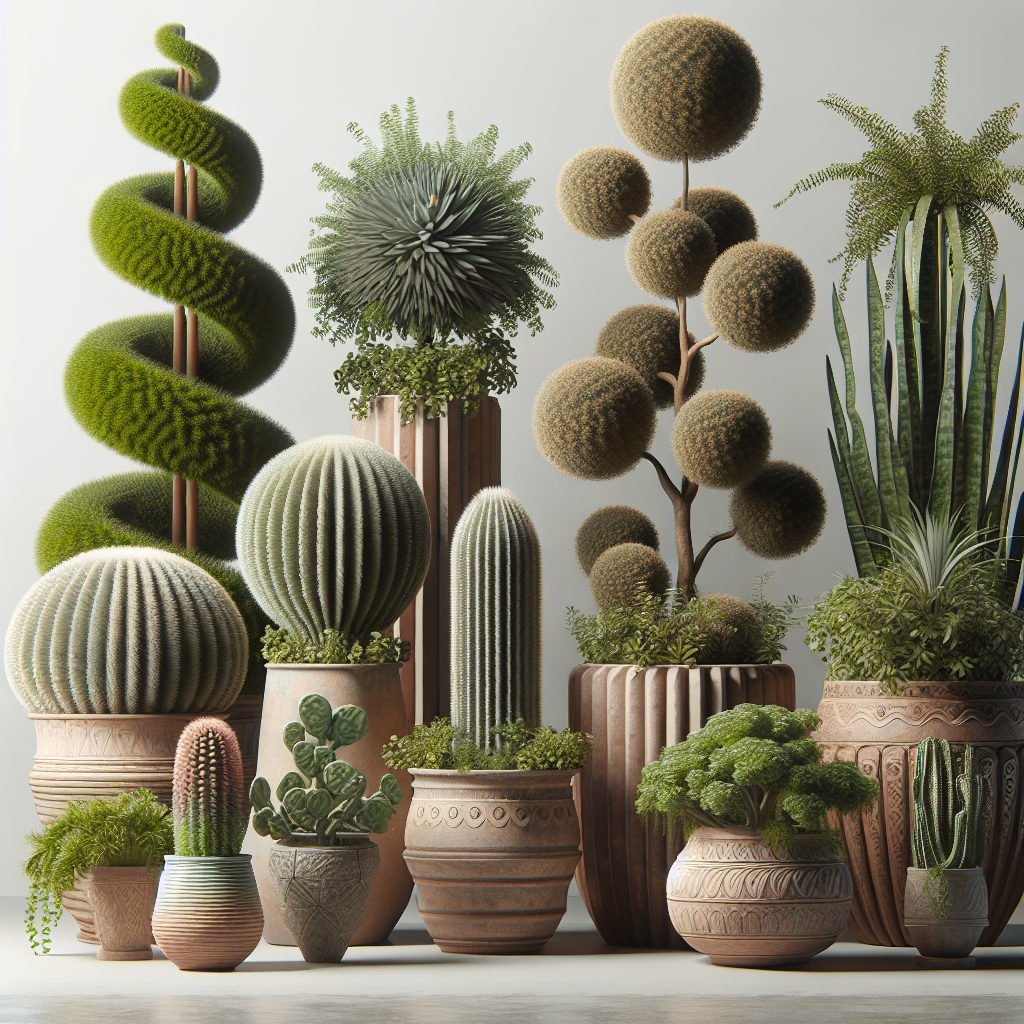Table of Contents
When it comes to creating eye-catching container displays, choosing the right plants is essential. Architectural plants are a great choice for adding drama and interest to your container arrangements. These plants have unique shapes, textures, and colors that can make a bold statement in any space. Whether you have a small balcony or a spacious patio, architectural plants can transform your outdoor area into a stunning oasis.
In this article, we will explore the world of architectural plants and how you can use them to create dramatic container displays. From tall spiky plants to cascading vines, there are endless possibilities for incorporating these striking specimens into your outdoor décor. So let’s dive in and discover the beauty and versatility of architectural plants!
The Benefits of Using Architectural Plants in Container Displays
Architectural plants are known for their unique shapes, sizes, and textures, which make them stand out in any garden or container arrangement. These plants add a sense of drama and sophistication to your outdoor space, creating focal points that draw the eye and capture attention.
One of the main benefits of using architectural plants in container displays is their ability to thrive in confined spaces. Many architectural plants are well-suited for containers due to their compact growth habits or shallow root systems. This makes them perfect for balconies, patios, or any small outdoor area where space is limited.
Top Architectural Plants for Dramatic Container Displays
1. Phormium
Phormium, also known as New Zealand flax, is a striking plant with long sword-like leaves that come in a variety of colors such as green, red, bronze, and variegated. This plant adds height and drama to any container display with its upright growth habit and bold foliage.
2. Cordyline
Cordyline, or Ti plant, is another popular choice for adding architectural interest to containers. This tropical plant features long strap-like leaves that come in shades of green, purple, red, or pink. Cordylines can be grown as a focal point in containers or mixed with other colorful annuals for added interest.
3. Yucca
Yucca is a tough and low-maintenance plant that thrives in containers with its spiky leaves and dramatic silhouette. This plant adds a touch of the desert landscape to your outdoor space with its sculptural form and architectural appeal.
4. Agave
Agave is another desert plant that makes a statement in containers with its rosette of thick succulent leaves. Known for their striking shapes and spiky edges, agaves are perfect for adding texture and visual interest to your container displays.
5. Aeonium
Aeoniums are unique succulents with rosettes of fleshy leaves that come in shades of green, purple, black, or variegated. These plants add a touch of exotic flair to your container arrangements with their otherworldly appearance and unusual growth habits.
Tips for Creating Stunning Container Displays with Architectural Plants
To create stunning container displays with architectural plants, consider the following tips:
- Select a variety of architectural plants with different heights, shapes,
and textures to create visual interest. - Choose containers that complement the colors and textures of your
architectural plants. - Consider adding trailing plants or vines around the base of your
architectural specimens to soften the overall look. - Place your containers strategically around your outdoor space to
create focal points and guide the eye through the landscape. - Water your architectural plants regularly and provide adequate
sunlight according to their specific requirements.
Frequently Asked Questions (FAQ)
- Q: Can I grow architectural plants indoors?
- Q: Do I need special soil for planting architectural plants?
- Q: How often should I fertilize my architectural plants?
- Q: Can I overwinter my architectural plants outdoors?
A: Yes! Many architectural plants can be grown indoors as long as they receive sufficient sunlight and proper care.
A: While some architectural plants may have specific soil requirements,
most will thrive in well-draining potting mix designed for container gardening.
A: It’s recommended to fertilize your architectural plants every few weeks during the growing season using a balanced fertilizer diluted according to package instructions.
A: Depending on your climate zone,
some architectural
plants may be able
to overwinter outdoors if provided with adequate protection from freezing temperatures.
Alternatively,
you can bring them indoors during winter months if necessary.













